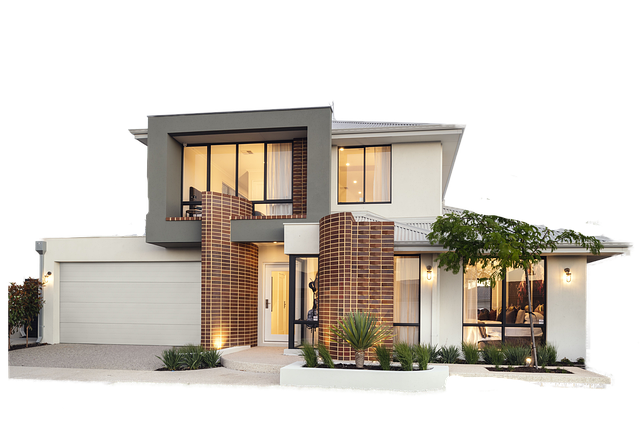Heating and cooling systems significantly impact a home's energy usage and environmental footprint, with traditional methods relying on non-renewable resources contributing to greenhouse gas emissions. Sustainable home improvements, such as heat pumps, solar thermal systems, and energy-efficient air conditioners, offer eco-friendly alternatives that reduce both energy consumption and carbon footprints. These modern technologies provide precise temperature control through smart features, long-term cost savings, and comfortable living environments, making them wise investments for any sustainable home. Passive cooling techniques and geothermal heat pumps are also crucial components in reducing energy usage, lowering utility costs, mitigating climate change, and enhancing indoor air quality. Researching and consulting with professionals is essential to identify the best sustainable home improvements tailored to individual needs and budgets.
In today’s world, understanding the environmental impact of heating and cooling systems is crucial. With a growing focus on sustainable home improvements, it’s time to explore eco-friendly alternatives that reduce our carbon footprint. This article delves into the significant role these systems play in climate change and introduces effective solutions like green heating technologies (e.g., heat pumps, solar thermal) and sustainable cooling methods (e.g., passive design, geothermal heat pumps). By adopting these innovations, homeowners can contribute to a greener future while enjoying comfortable living spaces.
Understanding the Impact of Heating and Cooling Systems on the Environment
Heating and cooling systems are major contributors to a home’s energy consumption, accounting for significant portions of both utility bills and carbon footprints. Traditional methods often rely on non-renewable resources like fossil fuels, leading to greenhouse gas emissions and environmental degradation. This is where sustainable home improvements come into play, offering eco-friendly alternatives that not only reduce environmental impact but also provide long-term cost savings.
By adopting green heating and cooling solutions, homeowners can contribute to mitigating climate change while enjoying more comfortable living spaces. Modern technologies like heat pumps, solar thermal systems, and energy-efficient air conditioners are designed to operate with lower energy intensities, thereby reducing the demand for harmful fuels. Moreover, these innovations often come equipped with smart features that enable precise temperature control, further enhancing energy efficiency and making them wise investments for any sustainable home.
Exploring Eco-Friendly Alternatives for Home Heating
In today’s eco-conscious world, homeowners are increasingly looking for sustainable home improvements, especially when it comes to heating and cooling systems. Traditional methods often rely on fossil fuels, contributing to environmental harm through greenhouse gas emissions. However, exploring eco-friendly alternatives offers not only environmental benefits but also potential savings on energy costs.
One promising solution is the adoption of heat pumps, which transfer heat between indoor and outdoor spaces using a small amount of electricity. This technology efficiently heats or cools homes by drawing on the earth’s consistent temperature. Additionally, implementing smart thermostats allows for precise temperature control, minimizing energy wastage. These sustainable home improvements not only reduce carbon footprints but also create comfortable living environments while promoting a greener lifestyle.
Sustainable Cooling Solutions for Your Home
In the pursuit of making our homes more eco-friendly, sustainable cooling solutions are a crucial aspect often overlooked. Traditional air conditioning systems contribute significantly to energy consumption and environmental impact. However, there are now innovative options available that offer both efficient cooling and reduced carbon footprint. One such solution is the use of passive cooling techniques, like proper insulation, natural ventilation, and reflective roofs, which minimize interior heat gain without relying on electricity.
Additionally, geothermal heat pumps stand out as a game-changer in sustainable home improvements. These systems harness the earth’s constant temperature to provide year-round comfort while using significantly less energy than conventional cooling methods. By investing in such eco-friendly alternatives, homeowners not only contribute to climate change mitigation but also enjoy lower utility bills and improved indoor air quality.
Benefits and Considerations of Adopting Green Heating and Cooling Technologies
Adopting green heating and cooling technologies offers a multitude of benefits for both homes and the environment. These eco-friendly solutions significantly reduce energy consumption, leading to lower utility bills and a smaller carbon footprint. Many green options, such as heat pumps and geothermal systems, provide efficient heating and cooling while minimizing the reliance on fossil fuels, contributing to a more sustainable home and a greener planet.
When considering sustainable home improvements, it’s crucial to evaluate initial costs, accessibility of resources, and potential long-term savings. While some eco-friendly technologies may have higher upfront expenses, they often pay for themselves over time through reduced energy bills. Moreover, local incentives and rebates can make these improvements more affordable. It’s essential to research and consult with professionals to determine the best green heating and cooling options tailored to individual needs and budgets.
As we look towards a more sustainable future, adopting eco-friendly heating and cooling solutions is no longer an option but a necessity. By understanding the environmental impact of traditional systems and exploring greener alternatives like heat pumps, solar thermal energy, and efficient air conditioning, homeowners can make significant contributions to reducing their carbon footprint. These sustainable home improvements not only benefit the planet but also offer long-term cost savings and improved comfort. It’s time for a green revolution in home heating and cooling, ensuring a healthier planet for future generations.
